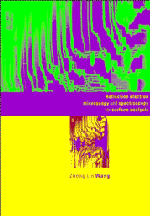Book contents
- Frontmatter
- Contents
- Preface
- Symbols and definitions
- 0 Introduction
- 1 Kinematical electron diffraction
- Part A Diffraction of reflected electrons
- Part B Imaging of reflected electrons
- Part C Inelastic scattering and spectrometry of reflected electrons
- 9 Phonon scattering in RHEED
- 10 Valence excitation in RHEED
- 11 Atomic inner shell excitations in RHEED
- 12 Novel techniques associated with reflection electron imaging
- Appendix A Physical constants, electron wavelengths and wave numbers
- Appendix B The crystal inner potential and electron scattering factor
- Appendix C.1 Crystallographic structure systems
- Appendix C.2 A FORTRAN program for calculating crystallographic data
- Appendix D Electron diffraction patterns of several types of crystal structures
- Appendix E.1 A FORTRAN program for single-loss spectra of a thin crystal slab in TEM
- Appendix E.2 A FORTRAN program for single-loss REELS spectra in RHEED
- Appendix E.3 A FORTRAN program for single-loss spectra of parallel-to-surface incident beams
- Appendix E.4 A FORTRAN program for single-loss spectra of interface excitation in TEM
- Appendix F A bibliography of REM, SREM and REELS
- References
- Materials index
- Subject index
12 - Novel techniques associated with reflection electron imaging
Published online by Cambridge University Press: 18 January 2010
- Frontmatter
- Contents
- Preface
- Symbols and definitions
- 0 Introduction
- 1 Kinematical electron diffraction
- Part A Diffraction of reflected electrons
- Part B Imaging of reflected electrons
- Part C Inelastic scattering and spectrometry of reflected electrons
- 9 Phonon scattering in RHEED
- 10 Valence excitation in RHEED
- 11 Atomic inner shell excitations in RHEED
- 12 Novel techniques associated with reflection electron imaging
- Appendix A Physical constants, electron wavelengths and wave numbers
- Appendix B The crystal inner potential and electron scattering factor
- Appendix C.1 Crystallographic structure systems
- Appendix C.2 A FORTRAN program for calculating crystallographic data
- Appendix D Electron diffraction patterns of several types of crystal structures
- Appendix E.1 A FORTRAN program for single-loss spectra of a thin crystal slab in TEM
- Appendix E.2 A FORTRAN program for single-loss REELS spectra in RHEED
- Appendix E.3 A FORTRAN program for single-loss spectra of parallel-to-surface incident beams
- Appendix E.4 A FORTRAN program for single-loss spectra of interface excitation in TEM
- Appendix F A bibliography of REM, SREM and REELS
- References
- Materials index
- Subject index
Summary
There are two basic requirements for REM imaging of surfaces. The specimen is strongly preferred to be a single-crystalline material so that strong Bragg-reflected beams can be generated. The surface has to be flat enough to permit grazing angle imaging. The foreshortening effect along the beam direction, however, is a major disadvantage of REM, which limits the application of REM for imaging a relatively rough surface. It is thus desirable to enhance the potential of this technique by using it in conjunction with other surface imaging and analytical techniques. We first examine the interaction of an electron beam with the surface.
Various processes can be excited when a fine electron probe interacts with a specimen, as shown in Figure 12.1. The reflected primary electrons from the surface can be used to form the surface image. The analysis of electron energy loss can provide rich chemical information about crystal surfaces. Secondary electrons (SE) are generated wherever the electron interacts with the specimen. The energy of secondary electrons is less than about 50 eV. SE signals have been widely used in scanning electron microscopy (SEM) for obtaining surface topographic information because their effect escape depth is about 1 nm. Nanometer-resolution SE imaging has been performed in a dedicated STEM instrument, which generates an electron probe as small as 0.5 nm. Under UHV conditions, Auger electrons emitted from the surface can be analyzed to provide surface-sensitive chemical information. Scanning Auger microscopy allows the detection of small metallic particles as small as 0.5 nm (Liu et al., 1992a, b).
- Type
- Chapter
- Information
- Publisher: Cambridge University PressPrint publication year: 1996

